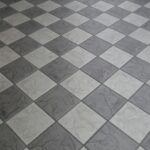Tent halls as a warehouse – is it worth it? Tent halls are structures that laymen mainly associate with the seasonal use of pipes covered with a tarpaulin as a temporary garage or workshop. However, for example, warehouse halls with a pump roof with a span of up to 50 m, a height of 15 m and a length of even several hundred meters, make such impressive facilities can amaze many grumblers.
Basic advantages of tent halls
Impression of the size and potential of buildings such as tent halls may be intensified when we realize that the assembly time of a hall with an area of up to several thousand square meters is only a few days. This technology, based on the use of light and durable aluminum profiles, offers unique, unprecedented possibilities. It is worth emphasizing that in many respects such halls can perfectly match the needs of both small and significant companies, they are a great alternative to investment involving huge costs of renting or building a traditional hall. Leading European companies in this industry offer long-term halls that have been adapted to the most difficult wind conditions and snow loads. Their common feature is that the roof is made of PVC fabric, and thus.
- https://www.mwf.com.pl/gdzie-mozna-wykorzystac-stoisko-handlowe/
- https://www.pka.org.pl/jak-dziala-pozycjonowanie-google/
- https://www.wolfproject.pl/suknie-slubne-i-dodatki-czyli-najgoretsze-trendy-tego-roku/
No concrete foundations are needed for tent halls – they can be quickly placed on a level surface, such as paving stones or asphalt. According to Polish law, a tent hall may be erected for a period of 180 days as a temporary facility. In the meantime, the formalities that will allow you to obtain a building permit and legalization of the hall as an object permanently connected with the ground or, as a last resort, dismantle it and put it in another place. The storage of many goods does not have to worry us about ensuring optimal thermal insulation. Roof and wall sheathing with PVC material will be sufficient to insulate the goods from wind, rain and snow without using huge resources.
An interesting example of a warehouse hall
Tent halls are very popular in Poland as a warehouse space. A good example is the impressive structure of the hall with dimensions of 40x70x6m with sheathing, made entirely of PVC, which serves as an aluminum ore reloading warehouse in the port of Szczecin. It has been designed to be resistant to the effects of spring and autumn storms for many years, and the PVC sheathing is perfect for industrial tents whose task is to protect painting work places, including in a shipyard, or any other construction works.
Various designs of tent halls
Better insulation from the outside environment will be provided by the hall with trapezoidal sheet walls, which is the basis for heating or ventilation installations. Nevertheless, it is still a mobile structure that can be quickly moved to another place. The most reliable hall will be the one with walls made of sandwich panels with thermal insulation foam and possibly a pumped roof. Such a hall gives the impression of a solid building from the very beginning, and despite the sensational short assembly time, this is what it really is. The halls, although designed for a useful life of at least ten years, can in practice serve much longer, as individual elements are easy to repair and replace thanks to the segmented structure. Depending on the needs, all tent hallscan be equipped with gates, doors, windows, heating, ventilation and air conditioning systems, as well as loading docks.
Although a PVC tarpaulin roof does not provide perfect thermal insulation, it is usually enough. In addition, better thermal insulation can be obtained by using a pumped roof, for which an additional heater is needed, forcing warm air. A good and proven method of heating a tent hall is the use of infrared heaters, which, unlike traditional heaters, do not heat the air in the entire volume of the hall.
Safety and durability of tent halls
It is extremely important, as in the case of traditional buildings, also in tent halls to adapt them to local snow and wind loads. Detailed regulations are included, among others, in the current standard 13782: 2015. Tent halls should meet the current standard at the design stage, because it may affect both the strength and the price of the structure itself. When browsing the commercial offers, one should pay attention to whether the attractive price is not a result of the hall structure “slimmer” and not meeting the current standards. When traveling around Europe in autumn and winter, it is easy to indicate that some objects did not withstand the test of stronger winds. Tent halls,as long as they are performed correctly with respect to the current standards, they should pass the test of even the maximum wind force for a given location without any damage





